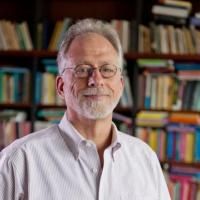Children's Intrinsic Motivation to Provide Help Themselves After Accidentally Harming Others.
Date
2016-11-01
Journal Title
Journal ISSN
Volume Title
Repository Usage Stats
views
downloads
Citation Stats
Abstract
Little is known about the flexibility of children's prosocial motivation. Here, 2- and 3-year-old children's (n = 128) internal arousal, as measured via changes in pupil dilation, was increased after they accidentally harmed a victim but were unable to repair the harm. If they were able to repair (or if they themselves did not cause the harm and the help was provided by someone else) their arousal subsided. This suggests that children are especially motivated to help those whom they have harmed, perhaps out of a sense of guilt and a desire to reconcile with them. Young children care not only about the well-being of others but also about the relationship they have with those who depend on their help.
Type
Department
Description
Provenance
Subjects
Citation
Permalink
Published Version (Please cite this version)
Publication Info
Hepach, Robert, Amrisha Vaish and Michael Tomasello (2016). Children's Intrinsic Motivation to Provide Help Themselves After Accidentally Harming Others. Child Dev. 10.1111/cdev.12646 Retrieved from https://hdl.handle.net/10161/13640.
This is constructed from limited available data and may be imprecise. To cite this article, please review & use the official citation provided by the journal.
Collections
Scholars@Duke

Michael Tomasello
Major research interests in processes of social cognition, social learning, cooperation, and communication from developmental, comparative, and cultural perspectives. Current theoretical focus on processes of shared intentionality. Empirical research mainly with human children from 1 to 4 years of age and great apes.
Unless otherwise indicated, scholarly articles published by Duke faculty members are made available here with a CC-BY-NC (Creative Commons Attribution Non-Commercial) license, as enabled by the Duke Open Access Policy. If you wish to use the materials in ways not already permitted under CC-BY-NC, please consult the copyright owner. Other materials are made available here through the author’s grant of a non-exclusive license to make their work openly accessible.
